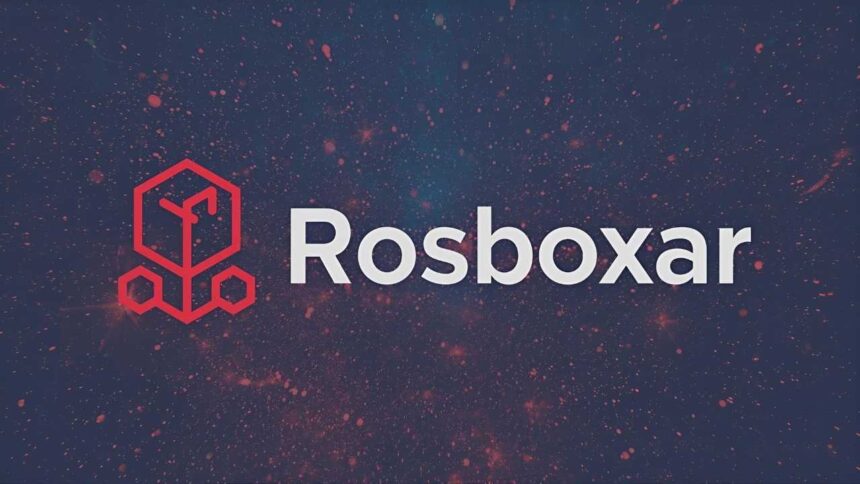What Is Rosboxar? A Guide to Its Meaning and Uses
In the world of technology, new concepts often emerge that have the potential to redefine how we manage data, security, and collaboration. One such term gaining traction among developers and IT professionals is Rosboxar. While it might sound complex, its core principles are designed to solve some of the most persistent challenges in data management and system architecture.
This guide will break down what Rosboxar is, exploring its origins, core concepts, and practical applications. For software developers, data scientists, and business leaders, understanding Rosboxar can unlock new efficiencies and create more secure, scalable systems. We will cover its primary use cases, compare it to existing solutions, and offer practical tips for implementation, giving you a comprehensive overview of why this concept is becoming so important.
The Origins and Core Concepts of Rosboxar
Rosboxar originated from the need to create a more flexible and secure environment for data interaction without the rigid constraints of traditional sandboxing. The term itself is a blend of “Robust” and “Sandbox,” reflecting its goal of providing a strong, yet adaptable, container for processes and data.
At its heart, Rosboxar is a framework for creating isolated environments where applications can run without interfering with one another or the underlying system. Unlike a conventional sandbox, which completely walls off an application, Rosboxar allows for controlled and policy-driven interactions between the isolated environment and external systems. This controlled permeability is what sets it apart.
The core concepts of Rosboxar include:
- Dynamic Isolation: Instead of a fixed, static boundary, Rosboxar creates dynamic isolation zones. These zones can expand or contract their permissions based on the specific task being performed, all governed by predefined policies.
- Policy-Based Access Control (PBAC): At the center of Rosboxar is a powerful policy engine. This engine dictates what data an application can access, what operations it can perform, and which other systems it can communicate with. Policies can be based on user roles, data sensitivity, or contextual triggers.
- Controlled Data Channels: Rosboxar establishes secure, monitored channels for data to flow in and out of the isolated environment. Every transaction is logged and audited, ensuring full transparency and compliance. This prevents unauthorized data leakage while still allowing for necessary data exchange.
- Resource Virtualization: It provides virtualized resources (like file systems, network access, and memory) to the application. This tricks the application into thinking it has full access to the system, while in reality, its interactions are being mediated and controlled by the Rosboxar framework.
Practical Use Cases for Rosboxar
The unique architecture of Rosboxar makes it highly effective in a variety of scenarios, particularly where both security and functionality are critical. Tech professionals and business leaders can leverage it to solve complex challenges across different domains.
Secure Third-Party Code Execution
Software development often involves integrating third-party libraries, plugins, or APIs. While this speeds up development, it also introduces security risks. An unknown vulnerability in a third-party component could compromise the entire application.
By running third-party code within a Rosboxar environment, developers can limit its access to sensitive data and critical system resources. The policy engine can be configured to grant only the minimum necessary permissions for the code to function, significantly reducing the attack surface. For example, a data visualization plugin could be granted read-only access to a specific dataset but be blocked from making any network calls or writing to the file system.
Safe Data Analysis and Machine Learning
Data scientists frequently work with large, sensitive datasets. They need to experiment with different models and algorithms, which sometimes involves running untested scripts. A mistake in a script could accidentally corrupt the original data or expose it.
Rosboxar allows data scientists to create a secure workspace for their analysis. They can load a copy of the production data into a Rosboxar environment where it is completely isolated. Within this space, they can perform any operation without fear of impacting the live dataset. Once their analysis is complete, only the final, verified results are exported through a controlled channel.
Multi-Tenant SaaS Applications
For businesses building multi-tenant Software-as-a-Service (SaaS) platforms, ensuring that one customer’s data is completely isolated from another’s is a top priority. A data breach affecting one tenant should never spill over to others.
Rosboxar can be used to create a distinct, isolated environment for each tenant. Even though all tenants might be running on the same underlying infrastructure, the Rosboxar framework ensures that their processes and data are kept separate. The policy-based access control prevents any cross-tenant communication, providing a high level of security and privacy that is crucial for building customer trust.
Secure Employee Onboarding and Training
When a new employee joins a company, they often need access to various systems for training purposes. Granting them full access to live production environments from day one can be risky.
IT departments can use Rosboxar to create a simulated training environment that mirrors the real systems. New hires can interact with this environment, learn the workflows, and even make mistakes without any real-world consequences. This “learning-by-doing” approach accelerates onboarding while keeping sensitive production systems safe.
Rosboxar vs. Alternative Solutions
To fully appreciate the value of Rosboxar, it is helpful to compare it with other common isolation technologies.
|
Feature |
Rosboxar |
Traditional Sandbox |
Virtual Machines (VMs) |
Containers (e.g., Docker) |
|---|---|---|---|---|
|
Isolation Level |
High (Process & Data) |
Very High (Complete) |
Very High (OS & Hardware) |
High (Process & Filesystem) |
|
Overhead |
Low to Medium |
Low |
High |
Low |
|
Flexibility |
High (Dynamic Policies) |
Low (Static Rules) |
Medium (Configurable) |
Medium (Configurable) |
|
Inter-Process Comms |
Controlled & Audited |
Blocked |
Possible via Virtual Networks |
Possible via Networks |
|
Use Case Focus |
Secure, flexible data interaction |
Running untrusted apps safely |
Full OS-level isolation |
Application deployment & scaling |
While VMs and containers offer robust isolation, they are not primarily designed for the fine-grained, policy-driven data control that Rosboxar provides. Traditional sandboxes, on the other hand, are often too restrictive, preventing applications from performing necessary functions. Rosboxar fills a critical gap by offering a solution that is both secure and flexible, making it ideal for the complex, interconnected systems common today.
The Future of Rosboxar
The development of Rosboxar is ongoing, with future trends pointing toward even greater intelligence and automation. Researchers are exploring the integration of machine learning into the policy engine. This would allow a Rosboxar environment to automatically detect anomalous behavior and adjust its security policies in real-time, moving from a reactive to a proactive security model.
Furthermore, efforts are underway to standardize Rosboxar APIs, which would make it easier for developers to integrate the framework into their applications and for different Rosboxar-based systems to interoperate seamlessly. As data privacy regulations become stricter worldwide, solutions like Rosboxar that provide verifiable data control and auditability will likely become an essential component of the modern tech stack.
A New Framework for Secure Innovation
Rosboxar represents a significant step forward in how we think about system security and data management. By moving beyond the rigid boundaries of traditional sandboxing, it provides a dynamic and intelligent framework for isolating processes while still allowing for controlled, necessary interactions.
For software developers, data scientists, and IT managers, adopting Rosboxar can lead to more secure applications, safer data analysis environments, and more robust multi-tenant architectures. For business leaders, it offers a path to innovation without compromising on security or compliance. As the digital landscape continues to evolve, frameworks like Rosboxar will be crucial for building the resilient and trustworthy systems of the future.





